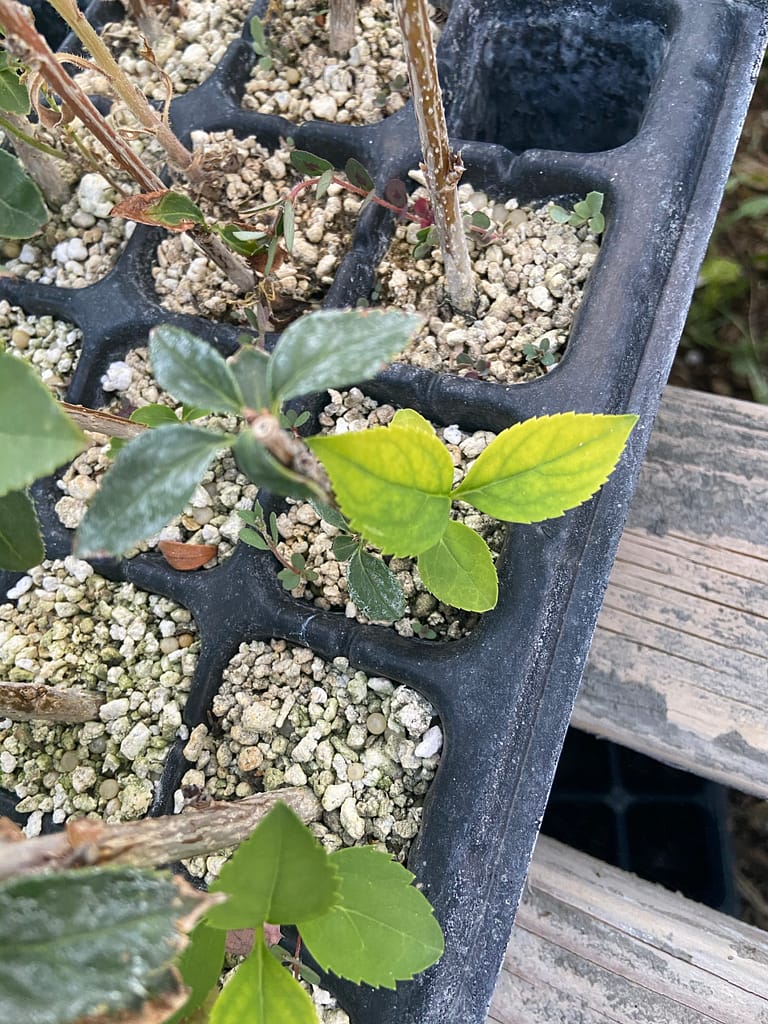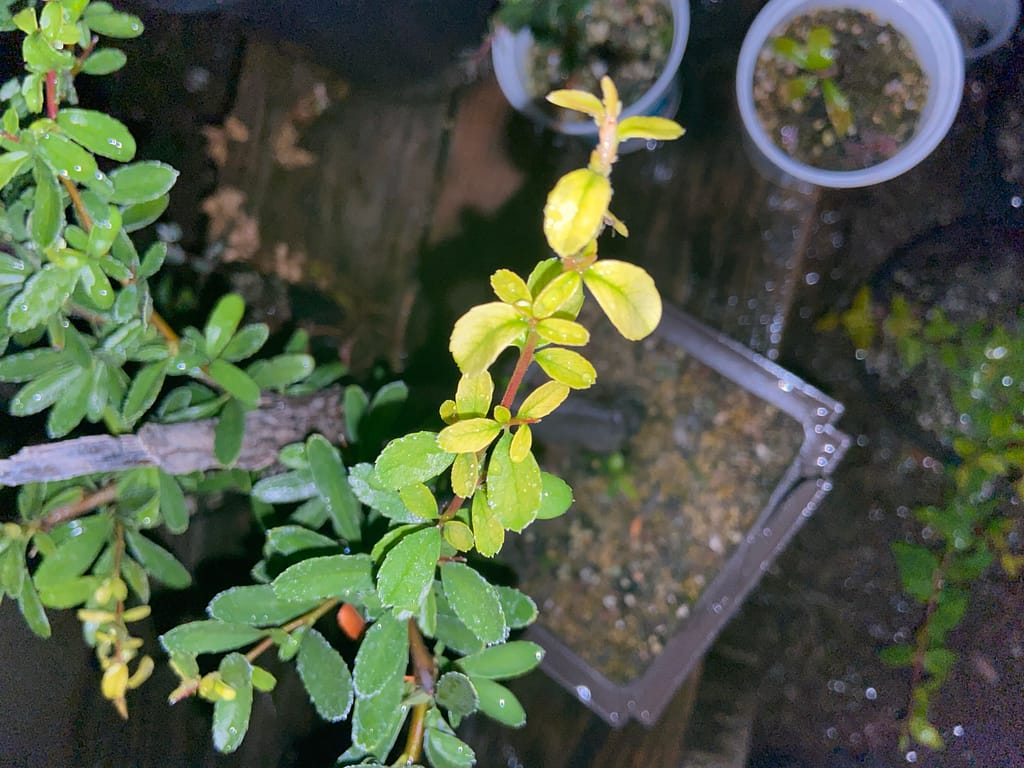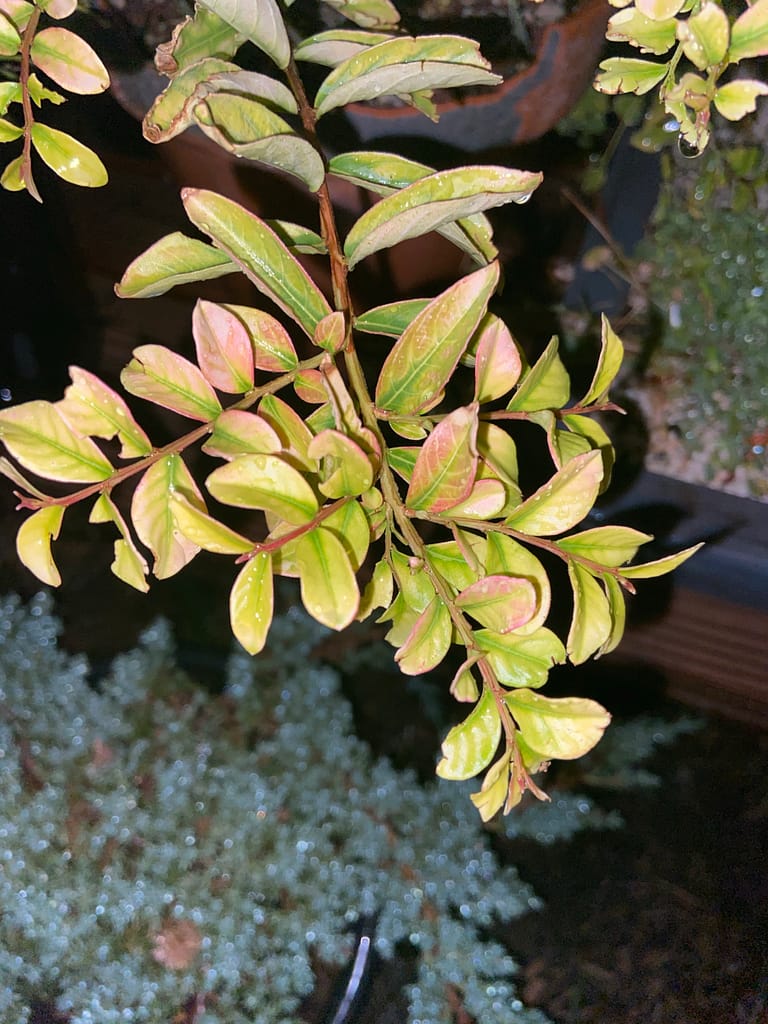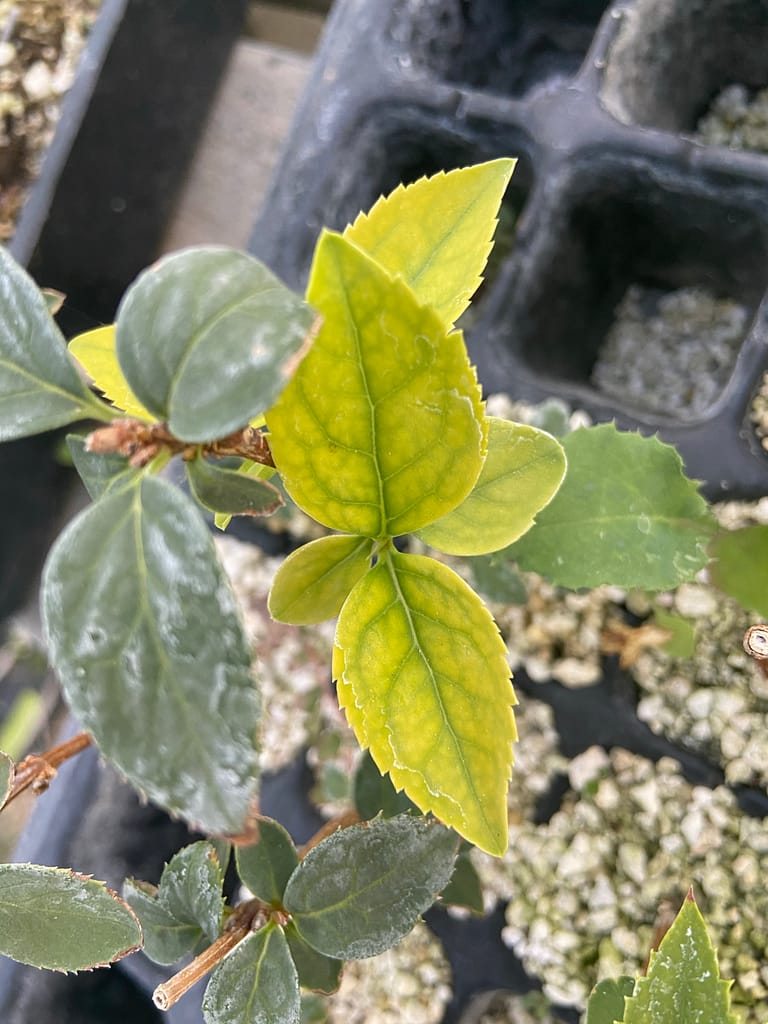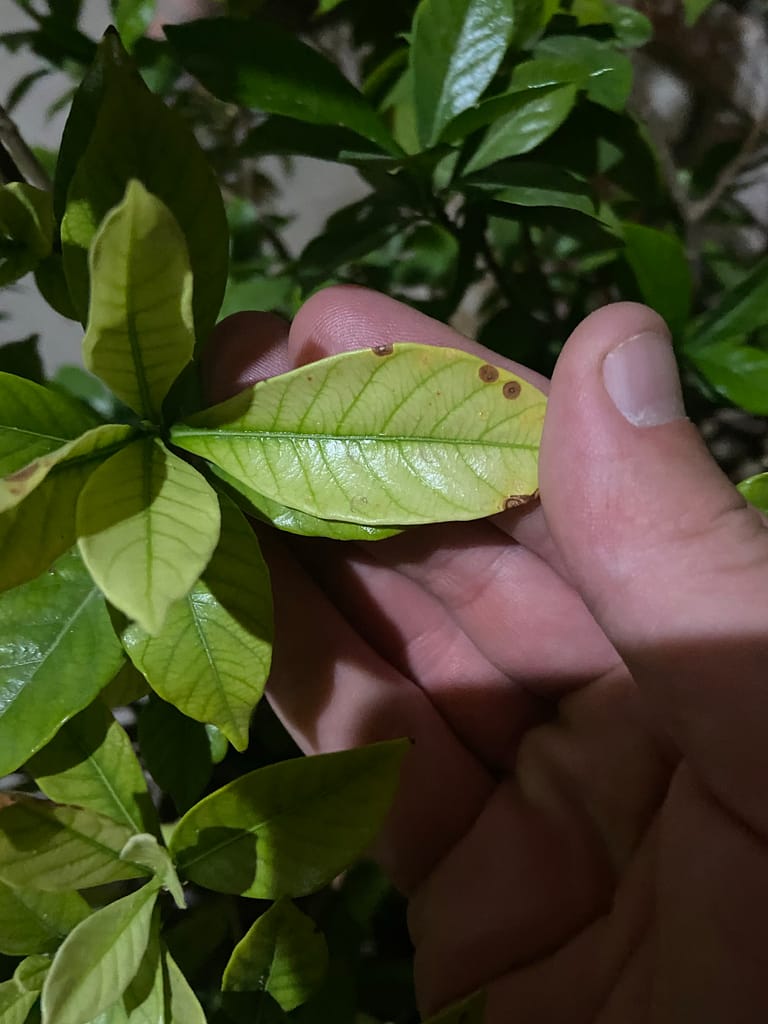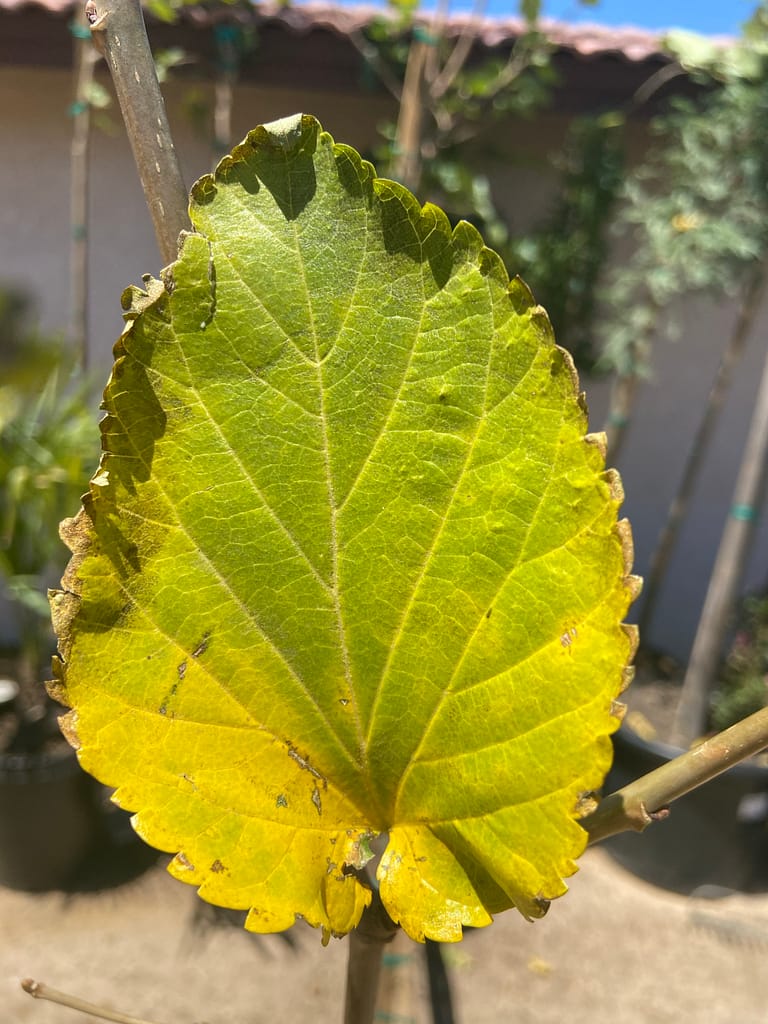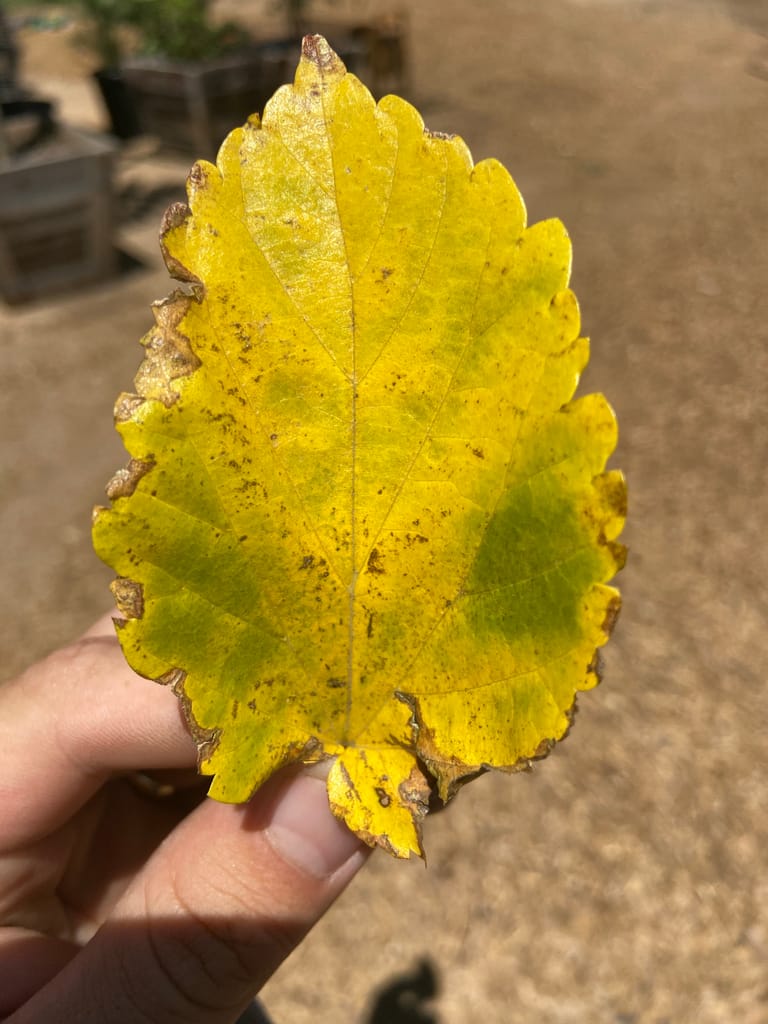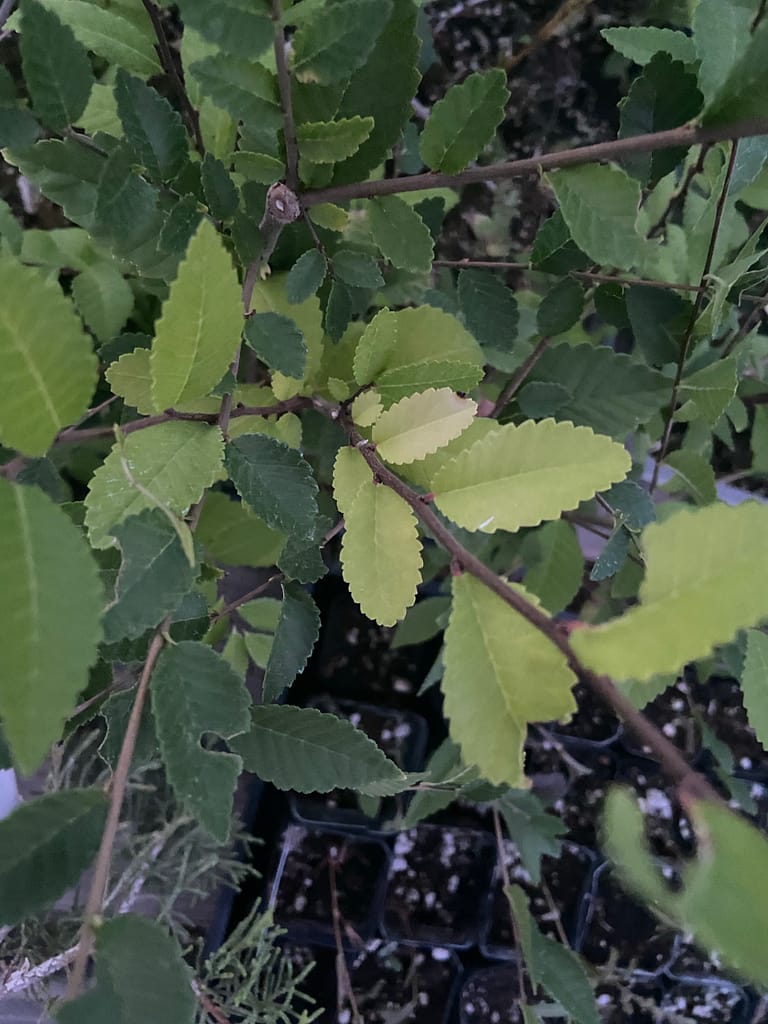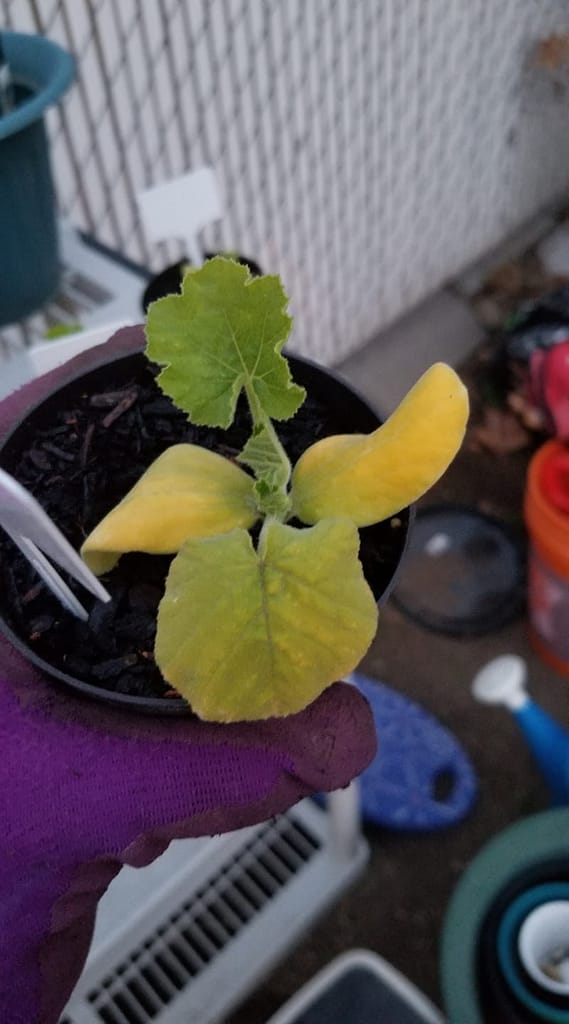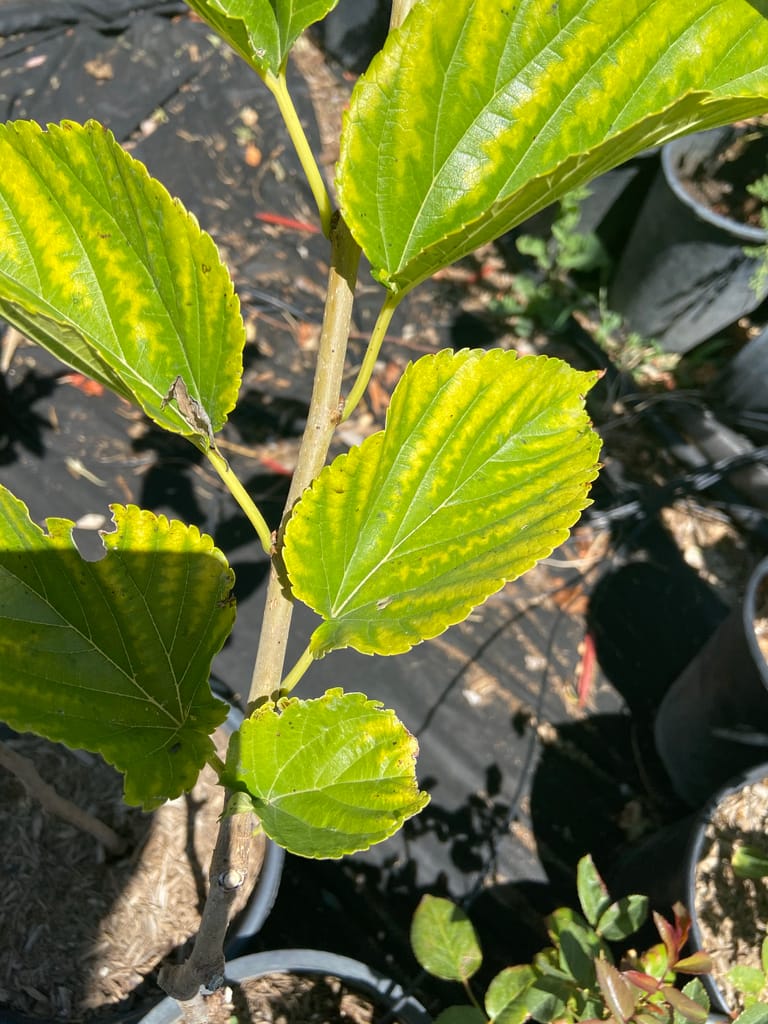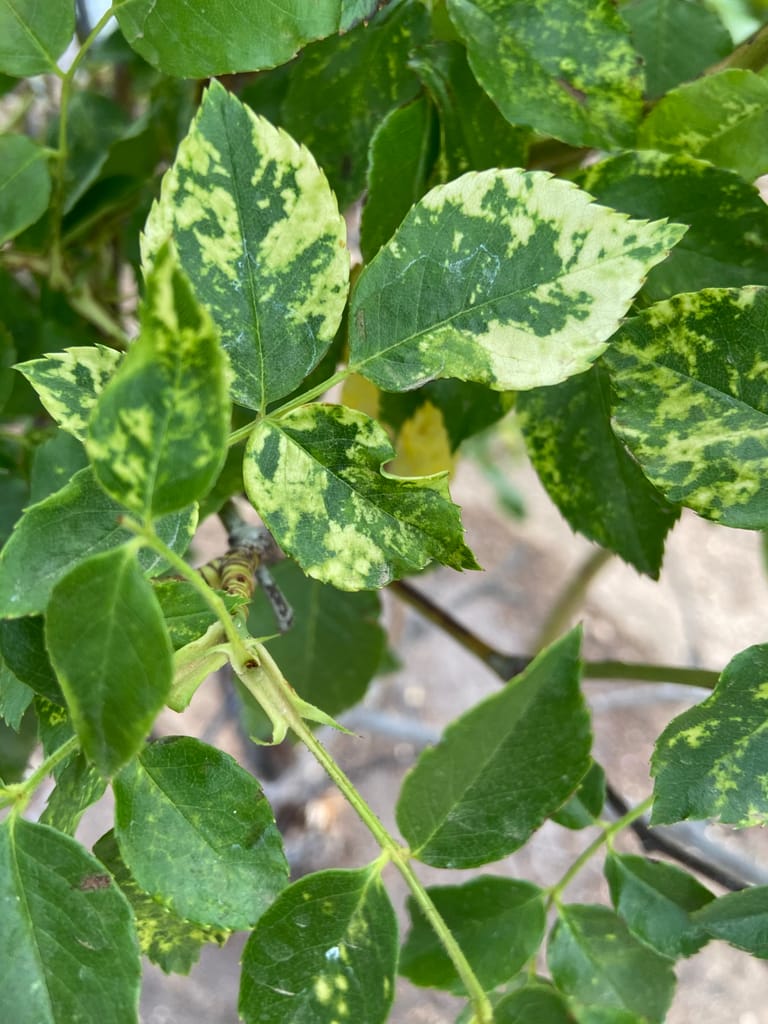Nutrients
Plants need nutrients to live, grow and reproduce. The nutrients that are needed fall into two major categories: macronutrients and micronutrients. They are thus named due to the amount of each nutrient needed. Three major conditions need to be present to allow the roots to obtain these nutrients from the soil. These conditions are:
- Soil must have sufficient moisture
- Soil pH must be within a specific range (see photo below for availability of nutrients at different pH)
- Soil temperature must fall within a certain range
The optimum ranges for each of these condition varies with each species. Due to this variance, there may be nutrients available in the soil, but conditions are not favorable to allow the plant to obtain it from the soil. Soil texture is a main characteristic of the soil that can help determine what nutrient deficiencies may occur. As you’ll see below, sandy soil is a risk for many nutrient deficiencies. Drought stressed plants can show nutrient deficiencies due to lack of moisture in the soil, and correct watering can single handedly solve those nutrient deficiencies.
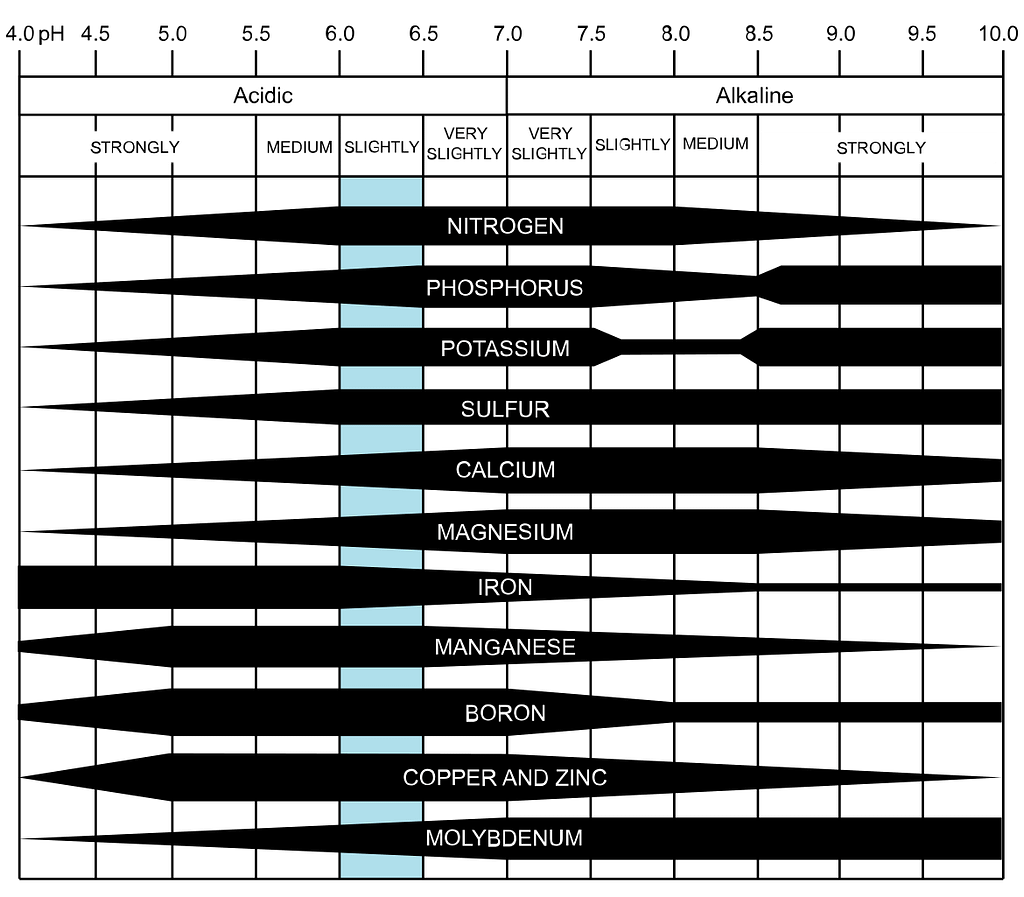
Macronutrients
There are 6 macronutrients that plants need in a larger amount. These macronutrients are:
- Nitrogen (N)
- Phosphorus (p)
- Potassium (K)
- Calcium (Ca)
- Magnesium (Mg)
- Sulfur (S)
These are the nutrients that generally need to be replenished through fertilization. N-P-K values that you see on fertilizer are the ratios of nitrogen, phosphorus, and potassium available in the that particular fertilizer.
Micronutrients
There are also 6 micronutrients that plants need in a much smaller amount. These micronutrients are:
- Boron (B)
- Copper (Cu)
- Iron (Fe)
- Manganese (Mn)
- Molybdenum (Mo)
- Zinc (Zn)
These nutrients do not need to be regularly addressed unless you see signs of deficiencies.
Identifying Your Nutrient Deficiency
There are a few steps you can take to help identify your nutrient deficiencies in your plants. Many times just a flow chart is not enough as you might come to two conclusions, it may not properly follow any set of steps, or you might have multiple deficiencies. Here are the steps to follow to help you accurately find the deficiency:
- Identify the plant species as different plants have different needs
- Identify your soil structure*
- Know your soil pH (or at least a range of what it is)**
- Determine if the plant has had sufficient water
- Check the high risk situations to see what risks your soil has
- Use the flowchart to get ideas for which nutrient is deficient
- Use the pH nutrient availability chart to see if it lines up with your soil pH
- Check for excess nutrients as a cause for the nutrient deficiency
- Lastly address the nutrient deficiency if and only if you know what the deficiency is***
* You can identify your soil structure by using the USDA and UC Davis soil surveys linked below, or you can do the homemade feel test which is done by making a small wet ball of soil in your hand and pressing it together. A gritty feel indicates fine and coarse sand, a silky feel indicates silt, and a plastic sticky feel indicates clay. Sand will almost never mould into a ball.
** Your soil pH does not need to be exact as knowing the general range is helpful, but you can do a pH test with strips obtained at your local home improvement store.
*** If you can’t identify the nutrient deficiency with any level of confidence, then there could be other problems and trying to solve it by throwing a fertilizer at it (and hoping it fixes the nutrient deficiency that it may not have) can certainly worsen the problem depending on what it is. A perfect example would be yellowing leaves that have a burnt margin from underwatering. Following the flow chart with this problem would be inconsistent and wouldn’t exactly fit any specific nutrient deficiency. If we fertilize it to hopefully fix the problem, we introduce more salts to the soil and will only further the damage of underwatering as the salts will draw water from the roots.
Below you can find images of all of the charts and tables to help you identify your deficiencies (your nutrient deficiencies, not your personal ones :D).
For soil structure and pH: https://casoilresource.lawr.ucdavis.edu/gmap/
An alternate, less user friendly version: https://websoilsurvey.sc.egov.usda.gov/App/WebSoilSurvey.aspx

https://www.ars.usda.gov/ARSUserFiles/50820500/Publications/FertilityManagement/DiagnosingNutrientDeficienciesterminologyhandout.pdf – This link is helpful in explaining the meaning of terms like necrosis, interveinal chlorosis, and distortion with photos.
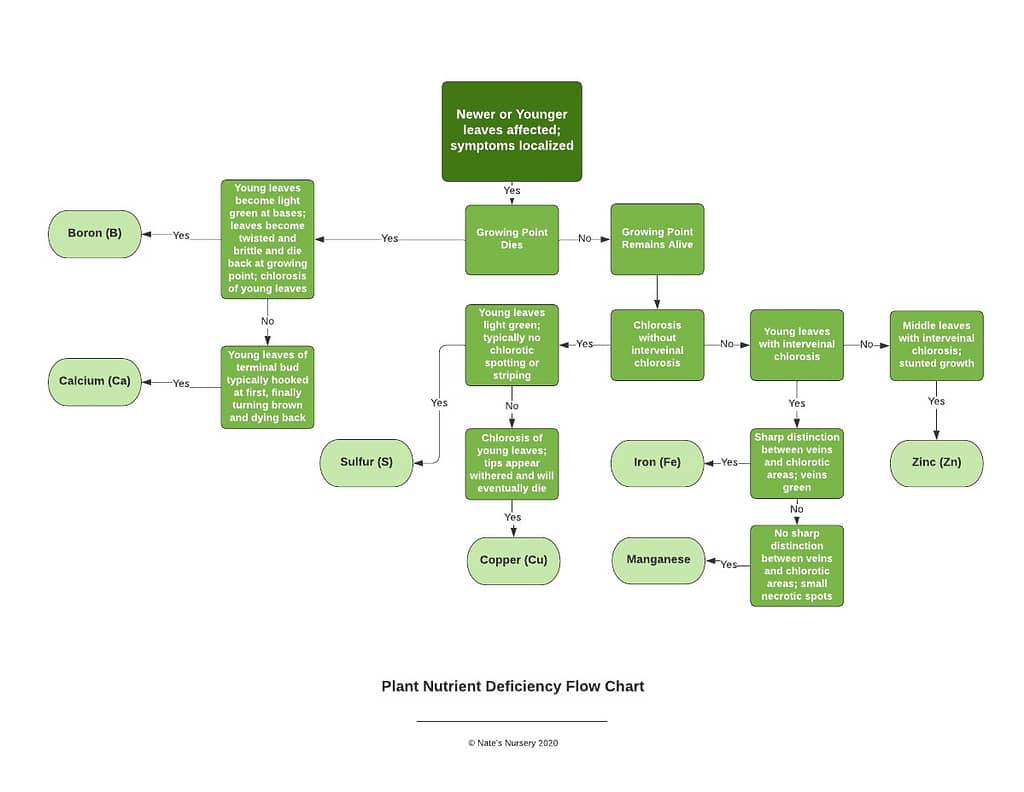
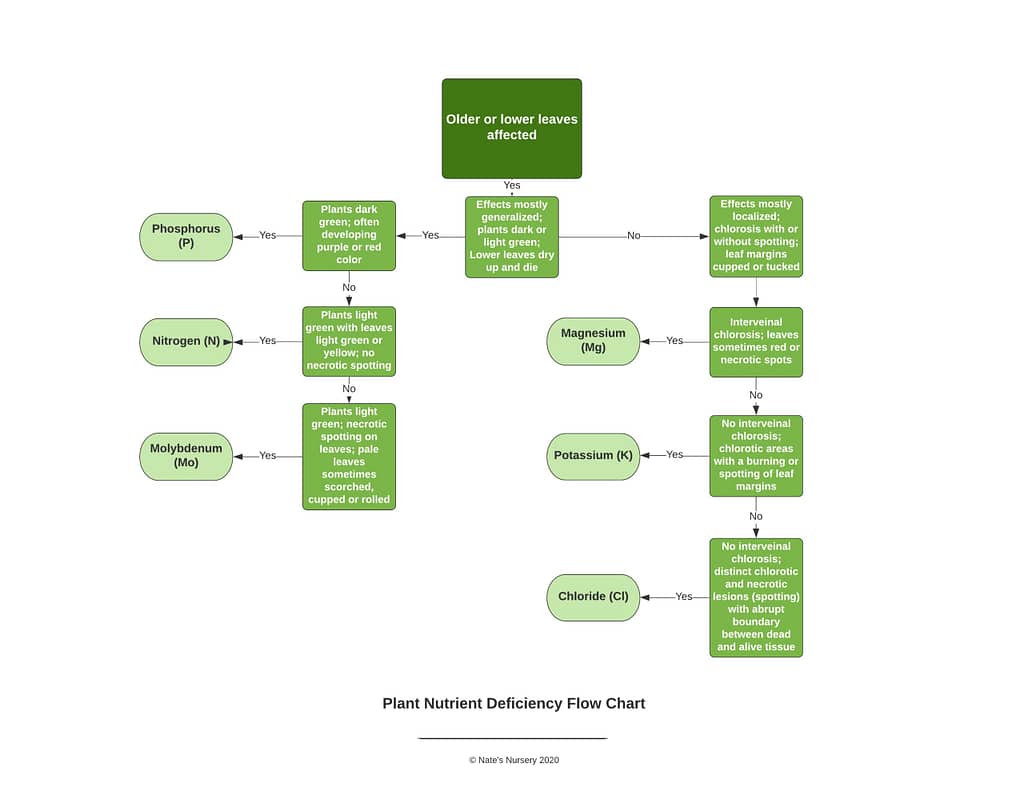
| Macronutrient | Deficiency Symptoms | High Risk Situations | Nutrient Excess Problems | Fertilizer Source | Comments |
|---|---|---|---|---|---|
| Calcium (Ca) | New leaves are distorted or irregularly shaped and eventually die back. Causes blossom-end rot. | May cause magnesium or potassium deficiency | Gypsum and calcium | Desert soils and water generally have plenty of calcium, so deficiencies are rare. An excess of calcium can limit other nutrient availability. | |
| Nitrogen (N) | Older leaves are light green to yellow with the rest of the plant being light green. No necrotic spotting | Light, sandy soils, low organic matter, high winter rainfall | Dark green foliage susceptible to lodging, drought, disease and insect invasion. | Ammonium, nitrate, urea, or manures | Water can wash away ammonium or nitrates which are the most common forms of absorbable nitrogen |
| Magnesium (Mg) | Older leaves are locally chlorotic with interveinal chlorosis. Outer edges are yellow with an inner leaf shaped green portion. Sometimes red or necrotic spots | High or low pH, high potash or calcium levels, sandy soils, and poor root development | Excess can be tolerated but may reduce growth with an imbalance of Calcium and Potassium | Epsom salts and magnesium | Can be easily leached from soil if calcium is not present |
| Phosphorus (P) | Older leaves are dark green and develop a deep red or purple color. Leaf tips also look burnt. | Heavy soils, acidic soils, and high pH soils | May cause iron, zinc, or other micronutrient deficiencies. | Phosphate or bone meal | pH strongly affects uptake |
| Potassium (K) | Older leaves without interveinal chlorosis but with chlorotic areas with burning leaf margins and sometimes a spotting along the leaf margins | Light, sandy soils, organic soils, excessive levels of Mg or Ca | May cause Magnesium and possibly calcium deficiencies. | Potassium or Potash | Desert soils and water typically have plenty of potassium, so deficiencies are unlikely |
| Sulfur (S) | Newer leaves are light green and growth tip remain alive and have chlorosis without interveinal chlorosis or striping/spotting | Sandy soils, low organic matter, high winter rainfall | May cause premature defoliation | Sulfate | Sulfur will lower soil pH |
| Micronutrients | Deficiency Symptoms | High Risk Situations | Nutrient Excess Problems | Fertilizer Source | Comments |
| Boron (B) | Newer leaves are chloritic with the newest leaves becoming twister and brittle and die back. | Sandy soils, high pH, and dry conditions | Leaf tips become yellow followed by necrosis. Leaves become scorched in appearance and fall off. | Borax or Borate | Problems with boron deficiencies are usually seen in intensely cropped areas |
| Copper (Cu) | New leaves are chloritic and the tips appear withered and eventually die. | Deep, sandy and light soils, high organic soils, livestock manure residues, high pH, and high N levels. | Copper, cupric, or cuprous | Problems with copper are more rare in desert soils | |
| Iron (Fe) | Newer leaves have interveinal chlorosis with a sharp distinction between the veins and the chlorotic areas. | High soil pH | May cause bronzing of leaves with tiny brown spots. | Iron chelate | Can be absorbed through the foliage and roots. pH strongly affect uptake. Common problem in alkaline soils |
| Manganese (Mn) | Newer leaves have interveinal chlorosis with no distinction between the veins and the chlorotic areas; has a spotty appearance | Loose, puffy seedbeds, organic soils, and high pH | Older leaves have brown spots surrounded by a chloritic area | Manganese or manganous | Can be absorbed through foliage as well as their roots |
| Molybdenum (Mo) | Older leaves are light green with necrotic spotting. Pale leaves are sometimes scorched, cupped or rolled. | Molybdate or molybdic | Seen on legumes where it mimics nitrogen deficiency | ||
| Zinc (Zn) | Middle leaves have interveinal chlorosis and stunted growth. | High pH, sandy soils, high soil level of Mg, K, and Ca | May cause iron deficiency in some plants | Zinc | High pH limits availability |
Examples of Nutrient Deficiencies
If you have photos of a deficiency you want help discerning or want to add to the gallery below you can comment below or email [email protected].

Manganese deficiency in photinia 
Iron deficiency in forsythia 
Iron deficiency in pyracantha 
Appears to be a phosphorus deficiency in Crape Myrtle 
Iron Deficiency in Forsythia 
A customer’s gardenia that has iron deficiency. Alkaline water is likely the culprit as the cause. 
Overwatered Mulberry – Few leaves were yellow and the rest were normally colored. Compare with the nitrogen deficient elm to see the difference between overwatering and nitrogen deficiency 
Overwatered Mulberry – Few leaves were yellow and the rest were normally colored. Compare with the nitrogen deficient elm to see the difference between overwatering and nitrogen deficiency 
Nitrogen Deficiency in Siberian Elm – Cause by being planted in composted wood chips that are fixing nitrogen and holding it from the tree 
Overwatering again, not nitrogen deficiency 
Manganese deficiency in Fruitless Mulberry 
Rose Mosaic – Example of a disease that is NOT a nutrient deficiency, but one could be led to think it was.
References used in compiling this information:
Billericay Fertiliser Services Ltd. Nutrient Deficiency Identification Guide. https://bfsfertiliserservices.uk/media/content/files/nutrient-deficiency-guide/guide.pdf
USDA Agricultural Research Service. (2009). Diagnosing Nutrient Deficiencies terminology handout. https://www.ars.usda.gov/ARSUserFiles/50820500/Publications/FertilityManagement/DiagnosingNutrientDeficienciesterminologyhandout.pdf
Ann McCauley, & Clain Jones, & Jeff Jacobson. (2011). Plant Nutrient Functions and Deficiency and Toxicity Symptoms. https://landresources.montana.edu/nm/documents/NM9.pdf
Shanyn Hosier, & Lucy Bradley. (1999). Guide to Symptoms of Plant Nutrient Deficiencies. https://extension.arizona.edu/sites/extension.arizona.edu/files/pubs/az1106.pdf
John Sawyer. (2004). Nutrient Deficiencies and Application Injuries in Field Crops. https://crops.extension.iastate.edu/files/article/nutrientdeficiency.pdf


